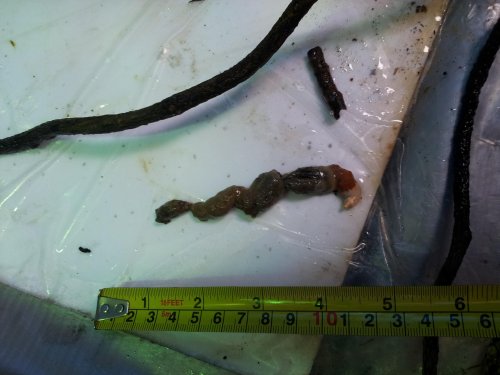RyU
New Member
I was asked to look at a chameleon that was sick, and who's owner could not afford to take to the vet. Apparently the cham hadn't eaten anything in a week and even stopped drinking a few days ago.
The cham looked overweight and the owner said it was "a new thing". After looking at the substrate in the tank I had a pretty good idea- Impaction. I misted him with warm water for about 20 minutes and found this. I have not seen anything like this in my life. This came from an 8 month old panther (I was so shocked by the poo I forgot to get a picture of the patient.)
The cham is eating and drinking now and looking mighty thin!
Never ever use substrate for chams guys. This is why.
The cham looked overweight and the owner said it was "a new thing". After looking at the substrate in the tank I had a pretty good idea- Impaction. I misted him with warm water for about 20 minutes and found this. I have not seen anything like this in my life. This came from an 8 month old panther (I was so shocked by the poo I forgot to get a picture of the patient.)
The cham is eating and drinking now and looking mighty thin!
Never ever use substrate for chams guys. This is why.










